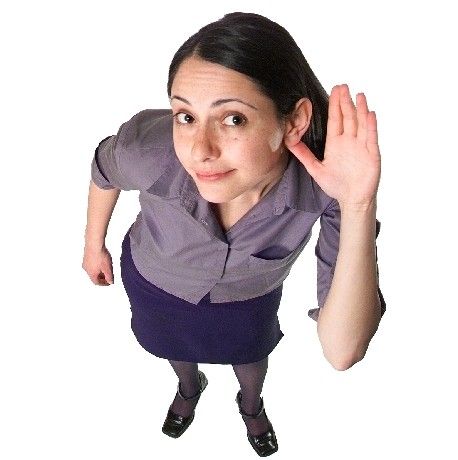Problem Solving
Below are a few popular articles from my courses on Leadership, Problem Solving and Conflict Resolution
It is typical of many leaders that they will delay making a decision about an important and even hazardous problem simply because they cannot or do not want to make a choice between their various options.  The leader may be hoping the problem will disappear or solve itself. This strategy is often successful with minor problems because minor problems generally lose importance over time and thus “disappear.” However, the problem with this delaying strategy is that MAJOR PROBLEMS usually do not go away or solve themselves. In fact, over time, major problems tend to get worse if corrective actions have not been initiated to resolve them. Furthermore, with many problems, your available options may become more limited over time as team moral and resources dwindle. Finally, indecision can lead to additional adverse consequences such as resentment or anger in yourself or other team members. This article describes common causes of indecision and strategies for making better decision.
The leader may be hoping the problem will disappear or solve itself. This strategy is often successful with minor problems because minor problems generally lose importance over time and thus “disappear.” However, the problem with this delaying strategy is that MAJOR PROBLEMS usually do not go away or solve themselves. In fact, over time, major problems tend to get worse if corrective actions have not been initiated to resolve them. Furthermore, with many problems, your available options may become more limited over time as team moral and resources dwindle. Finally, indecision can lead to additional adverse consequences such as resentment or anger in yourself or other team members. This article describes common causes of indecision and strategies for making better decision.
These are second graders taking turns leading their class by holding their class flag.  My daughter’s elementary school does a great job of teaching team work, and leadership skills. The kids in my daughter’s Second Grade class made their own “flag” which they took turns carrying around the school yard during the annual “walkathon-fund-raiser. Leadership is a more difficult task for adults not only because the best path is less clear, but because there are many more road blocks in the way. Nevertheless, leadership is like any other skill. The more you study and the more you practice the better you get. The following is a handout I wrote for my Leadership Skills courses at Bellevue Community College. While it is written for Wilderness Leaders, most of the concepts apply to any kind of group leadership position.
My daughter’s elementary school does a great job of teaching team work, and leadership skills. The kids in my daughter’s Second Grade class made their own “flag” which they took turns carrying around the school yard during the annual “walkathon-fund-raiser. Leadership is a more difficult task for adults not only because the best path is less clear, but because there are many more road blocks in the way. Nevertheless, leadership is like any other skill. The more you study and the more you practice the better you get. The following is a handout I wrote for my Leadership Skills courses at Bellevue Community College. While it is written for Wilderness Leaders, most of the concepts apply to any kind of group leadership position.
The ideal leader is a complex combination of many things. The following are some traits of effective leadership, No person will score high in all of them but the more of these attributes you are able to develop, the better leader you will be able to become. Note that all of the following are also the characteristics of a saint or a good mother or father, thus qualifying leadership as a sacred activity.
This is my daughter, Sierra, teaching her students in “Ms. Spring's Classroom.” But Sierra and I each have a problem. My problem is I want my daughter to go to college. My daughter’s problem is she wants is to be a teacher when she grows up. So we turned our dining room into a classroom where my daughter re-enacts what happens in her real class each day, only in the evening Sierra gets to be the teacher. I told Sierra if she wants to be a teacher, she needs to do well in school so she can get into a good college. But here’s my problem… my daughter is going to school in one of the lowest funded and most over-crowded school districts in America. The following is an article I wrote about problem solving ten years ago. These are the 8 steps I am now using to try to solve our State’s school funding problem.
But Sierra and I each have a problem. My problem is I want my daughter to go to college. My daughter’s problem is she wants is to be a teacher when she grows up. So we turned our dining room into a classroom where my daughter re-enacts what happens in her real class each day, only in the evening Sierra gets to be the teacher. I told Sierra if she wants to be a teacher, she needs to do well in school so she can get into a good college. But here’s my problem… my daughter is going to school in one of the lowest funded and most over-crowded school districts in America. The following is an article I wrote about problem solving ten years ago. These are the 8 steps I am now using to try to solve our State’s school funding problem.
STEP 1 - AWARENESS THAT A PROBLEM MIGHT EXIST
Anticipate the potential for problems before they actually occur. Acknowledge them as they arise. Admit responsibility for your part in creating a problem and take an active role in seeking a solution.
Active listeningis an important, but often overlooked part of the problem solving process. Active listening means hearing the whole message.

In addition to listening and watching, itinvolves listening with the "third ear". Ask yourself not only what is the person saying, but what are they trying to say and what are they feeling. There are two components to active listening. The first is building bridges of trust and understanding. The second is breaking barriers which might prevent the message from being fully presented or understood. This article describes these two important problem solving skills.
This is a picture of my daughter making her first pot.  My daughter does not like messes. But she now loves Arts and Crafts because she was willing to give it a try. We all have a tendency to avoid problems because things might turn out to be messy. But unless we are willing to risk trying, problems are likely to get worse rather than better. We are limited in our ability to learn by our attitude toward change. It is common to think that change is risky therefore change is fearful. We might also think that change is work therefore change should be avoided as much as possible. Change means acknowledging that we are not “already perfect”. If we admit to a need for change we may think there is something wrong with us and take it as a blow to our ego or self-esteem. But if you are ever going to solve problems, we need to get past our fear of change and learn to boldly go where no team has gone before. The following is information on change models and how we can overcome bad habits and learn to embrace change.
My daughter does not like messes. But she now loves Arts and Crafts because she was willing to give it a try. We all have a tendency to avoid problems because things might turn out to be messy. But unless we are willing to risk trying, problems are likely to get worse rather than better. We are limited in our ability to learn by our attitude toward change. It is common to think that change is risky therefore change is fearful. We might also think that change is work therefore change should be avoided as much as possible. Change means acknowledging that we are not “already perfect”. If we admit to a need for change we may think there is something wrong with us and take it as a blow to our ego or self-esteem. But if you are ever going to solve problems, we need to get past our fear of change and learn to boldly go where no team has gone before. The following is information on change models and how we can overcome bad habits and learn to embrace change.
One of the most common obstacles in trying to solve problems is that others will disagree with your proposed solution. This leads to conflict which in turn may hinder any solution to the problem. So conflict resolution is an important part of problem solving.  All conflicts have complex and often hidden underlying causes. While we might initially assume we are dealing with a “bad” person, the truth is most people try very hard to be good and avoid conflict (because it is a basic human need to be liked and accepted). Since no one deliberately causes harm for another person, the real cause of most conflicts is generally NOT the obvious or immediate problem. An open or noticeable conflict instead is merely the last in a series of steps that lead up to it. The real cause of conflict typically involves hidden issues which are commonly referred to as “personality clashes” or differences in “personal values”. These in turn are based on a life time of experiences which lead us all to believe that we are right and the other person is wrong.
All conflicts have complex and often hidden underlying causes. While we might initially assume we are dealing with a “bad” person, the truth is most people try very hard to be good and avoid conflict (because it is a basic human need to be liked and accepted). Since no one deliberately causes harm for another person, the real cause of most conflicts is generally NOT the obvious or immediate problem. An open or noticeable conflict instead is merely the last in a series of steps that lead up to it. The real cause of conflict typically involves hidden issues which are commonly referred to as “personality clashes” or differences in “personal values”. These in turn are based on a life time of experiences which lead us all to believe that we are right and the other person is wrong.








